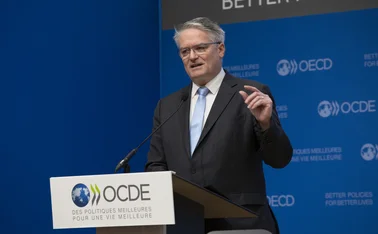
BoE paper offers solution to ‘paradox of flexibility’
Using shadow rate can avoid anomalous results at zero lower bound, authors say

Adding a shadow interest rate to a New Keynesian model can help avoid anomalies when a central bank faces a liquidity trap, a Bank of England working paper finds.
In Monetary policy inertia and the paradox of flexibility, Dario Bonciani and Joonseok Oh note standard models predict price flexibility is destabilising near the zero lower bound. If prices can adjust but monetary policy becomes powerless, this can trigger a deflationary spiral.
However, central banks in recent years have shown that
Only users who have a paid subscription or are part of a corporate subscription are able to print or copy content.
To access these options, along with all other subscription benefits, please contact info@centralbanking.com or view our subscription options here: http://subscriptions.centralbanking.com/subscribe
You are currently unable to print this content. Please contact info@centralbanking.com to find out more.
You are currently unable to copy this content. Please contact info@centralbanking.com to find out more.
Copyright Infopro Digital Limited. All rights reserved.
As outlined in our terms and conditions, https://www.infopro-digital.com/terms-and-conditions/subscriptions/ (point 2.4), printing is limited to a single copy.
If you would like to purchase additional rights please email info@centralbanking.com
Copyright Infopro Digital Limited. All rights reserved.
You may share this content using our article tools. As outlined in our terms and conditions, https://www.infopro-digital.com/terms-and-conditions/subscriptions/ (clause 2.4), an Authorised User may only make one copy of the materials for their own personal use. You must also comply with the restrictions in clause 2.5.
If you would like to purchase additional rights please email info@centralbanking.com







